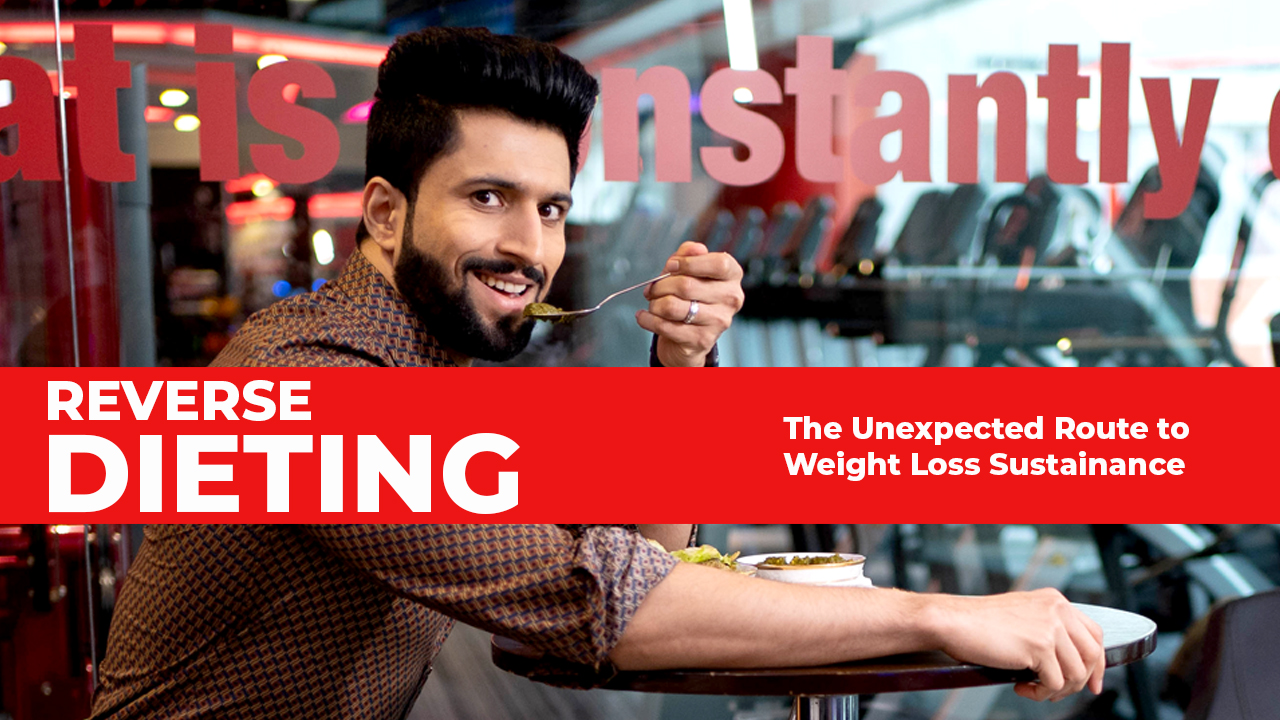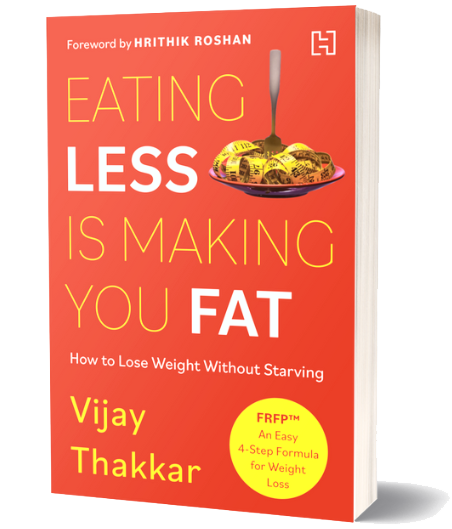The weight loss industry is valued at over $260 billion, with more than 1 billion people
suffering from weight gain problems. This problem has made people go on a highly low-
calorie diet to lose weight. However, most individuals need to maintain this weight loss for
many decades rather than just a few months or weeks, which is difficult to do following a
low-calorie diet over the long term or progress further in their journey.
Given this struggle of many individuals to sustain weight loss, it is fair to concede that the
realm of diet and nutrition is dynamic, nuanced and beyond the idea of calorie in-calorie
out, often punctuated by intriguing concepts that challenge the status quo. “Reverse
Dieting” is generating buzz. In this article, we will cover what is it, who needs it, and how
does it work?
What is Reverse Dieting?
In essence, reverse dieting is the strategic and gradual increase of caloric intake after a
period of restrictive, low-calorie dieting, designed to rebuild your metabolism without
significantly promoting fat gain. The traditional approach to coming out of a weight loss diet
always has been to increase the calorie intake to the maintenance level. Doing so does more
harm than good when sustaining weight loss results.
So, instead of abruptly jumping back to a maintenance level of calorie intake, you slowly re-
introduce calories into your diet, boosting your metabolic rate, keeping your body’s energy
expenditure up and preventing excessive weight rebound.
The need for reverse dieting primarily arises from the body’s adaptive nature to caloric
intake. When we drastically cut calories to lose weight, our body’s metabolic rate slows
down, and energy expenditure decreases, a process known as “adaptive thermogenesis.”
This shift to burning and sustaining the body on fewer calories is a survival mechanism built
into our bodies during the famine, food scarcity and starvation.
But in modern times, when famine is rare, weight loss from restrictive eating should be
dealt with by science and mindful eating; otherwise, a lower level of the body’s energy
expenditure and metabolic adaptation to surviving on fewer calories can create a vicious
cycle of yo-yo dieting if your calorie intake is instantaneously increased to the maintenance
level.
Reverse dieting aims to curb this cycle, making it suitable for individuals who have
undergone prolonged calorie restriction, including athletes after a competition, individuals
recovering from eating disorders under professional guidance, and those stuck in the weight
loss plateau.
Why is reverse dieting necessary?
After a period of low-calorie dieting, the body tends to conserve energy, which results in a
sluggish metabolism and build-up of fat stores.
Also, after being on a very low-calorie diet, we feel starving because it increases the
production of ghrelin (the hunger hormone), making us more prone to overeating.
Furthermore, leptin (the satiety hormone) levels decrease on a low-calorie diet, causing us
to feel less satisfied after eating. However, by slowly increasing our caloric intake, reverse
dieting helps readjust these hormonal levels, increase metabolic rate, and reduce the risk of
post-diet weight gain.
The reverse diet is a mirror image of traditional dieting. This is how broadly it should be
done. After a caloric restriction, increase your daily calorie intake by about 50-100 calories.
Monitor your weight and body composition for a week. If there are no significant changes,
increase by another 50-100 calories. Repeat this until you reach your new maintenance level
of calories, where you can consume a healthy amount of food without gaining inches and
body fat.
For example, if you are 5’7” in height and, after your weight loss, you weigh 65 kg, consume
1200 kcal per day and want to maintain this body weight. Instead of dramatically increasing
your daily calorie intake to a maintenance level of calories, it is better to gradually add 100
calories weekly for the initial two weeks and then add 50 calories weekly until your body
can maintain this weight. This energy intake is the optimal amount of calories to maintain
your weight loss without starvation. Slowly adding calories to your weight loss diet allows
the body to adapt to increasing calories and prepare by burning them off through increased
energy expenditure/metabolism. If that point happens to be 1500 kcal, then you need to
stick to that to sustain your weight loss at this level.
What kind of calories should I add while reverse dieting?
Focusing on protein, fibre, and nutrient-dense foods during calorie increases is crucial.
Rather than filling the increased calorie allowance with processed, empty-calorie foods, opt
for healthy options high in fibre, protein, and naturally occurring healthy fats. This approach
ensures the body receives all the necessary nutrients for repair, growth, and optimal
functioning.
It’s important to note that reverse dieting takes time and effort. The aim isn’t to skyrocket
your metabolism because eating calories above the level that your body can burn may result
in unwanted weight regain. It is also not a one-size-fits-all solution and doesn’t replace the
need for balanced, mindful eating and regular exercise.
The concept of reverse dieting is supported by promising anecdotal evidence, although
rigorous scientific studies are still in progress. As with all health interventions, it is advised
to consult with a registered dietitian or to know more; you can book your session here
before starting a reverse diet, particularly if you have a history of disordered eating.
Finally, reverse dieting offers a fascinating approach to the age-old challenge of maintaining
weight loss and rebuilding metabolic health. It underscores the importance of patience,
gradual progression, and sustainable lifestyle changes over quick, drastic fixes that do not
last long. As we learn more about the human body’s metabolic intricacies, approaches like
reverse dieting may become standard practice in our journey towards healthier food
relationships.








